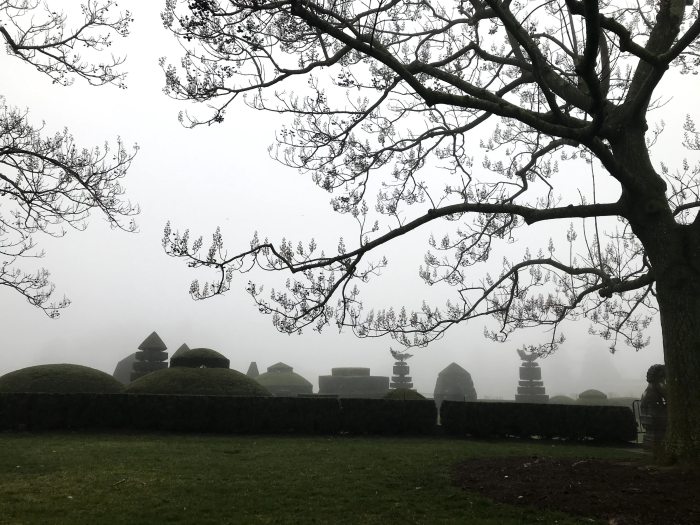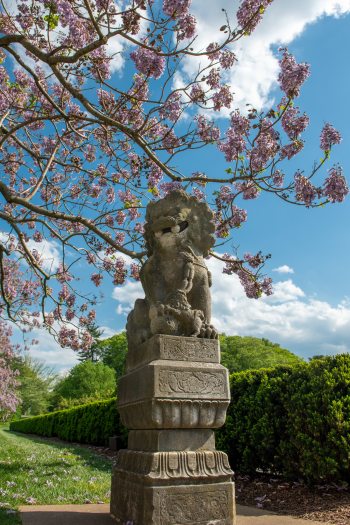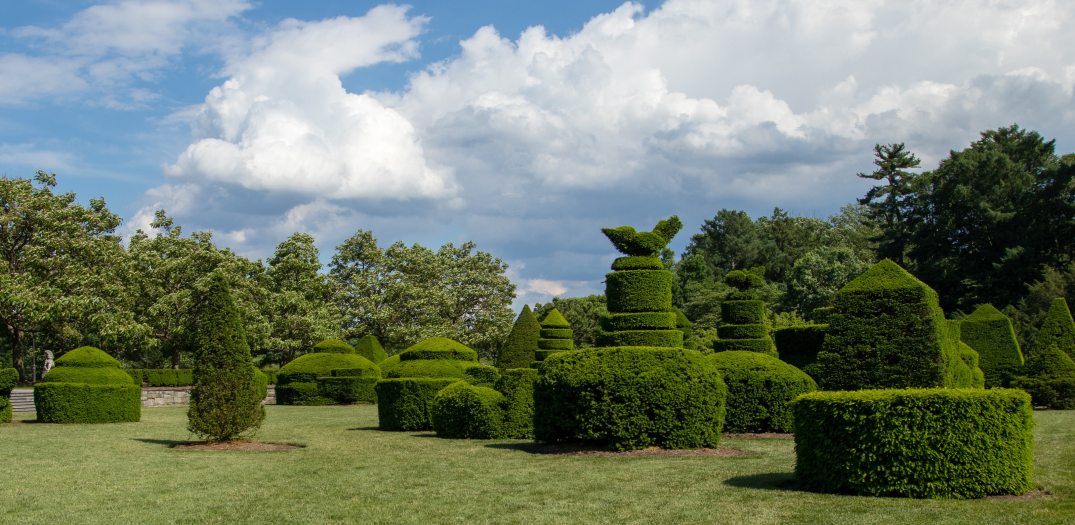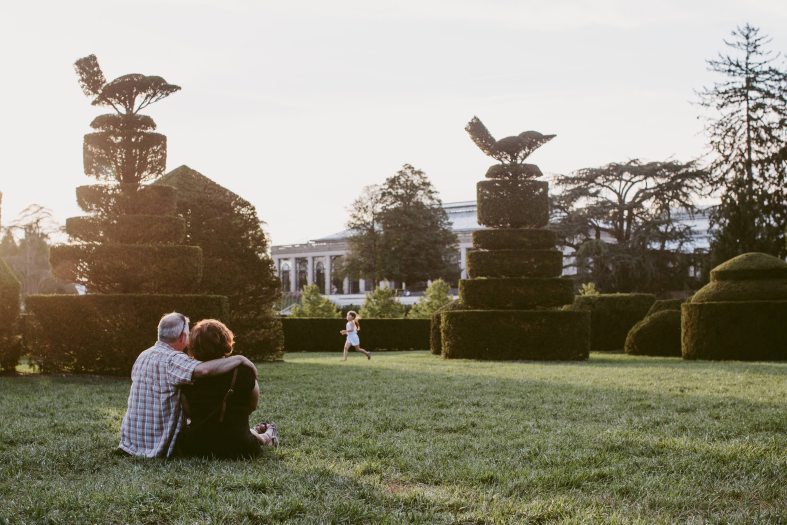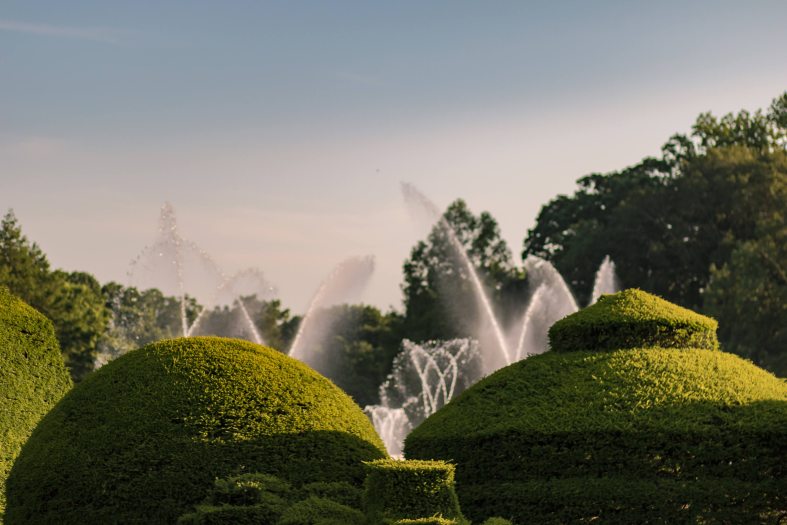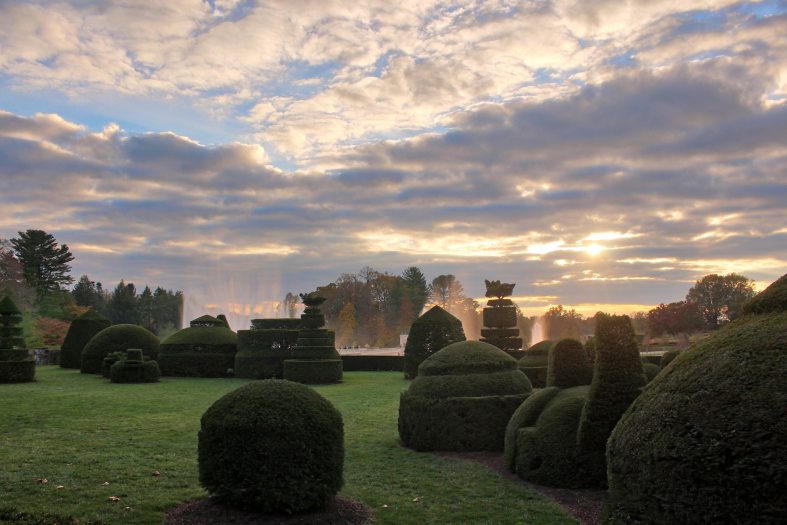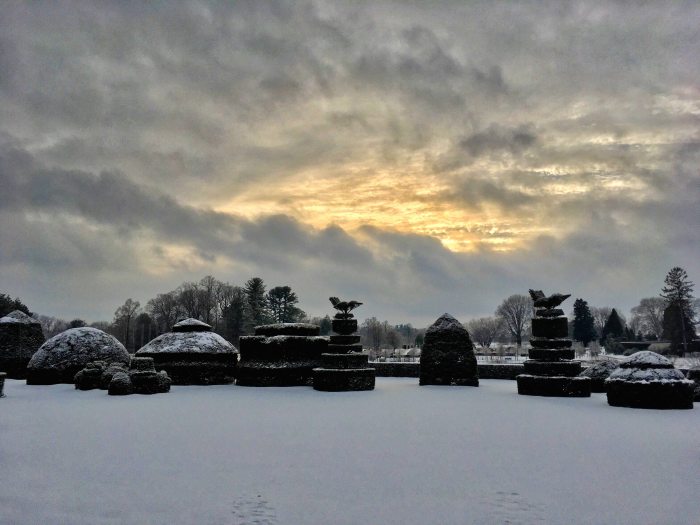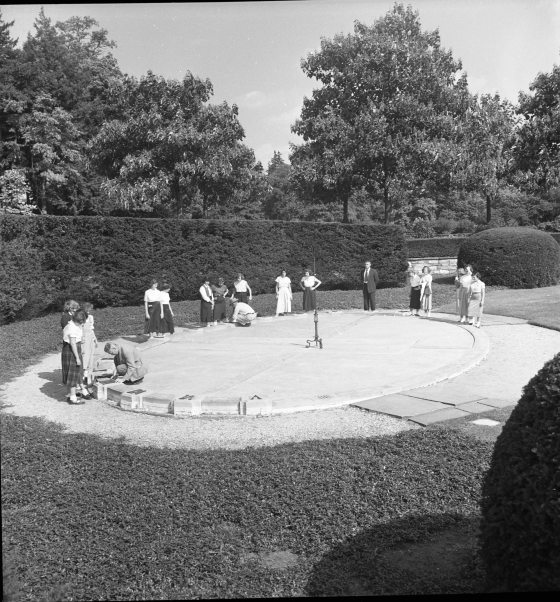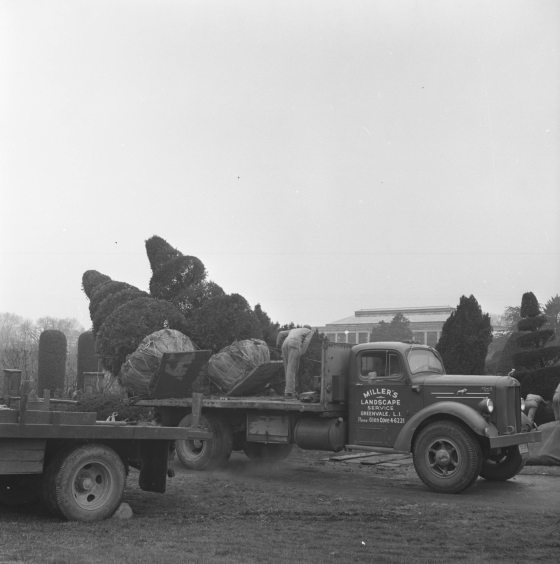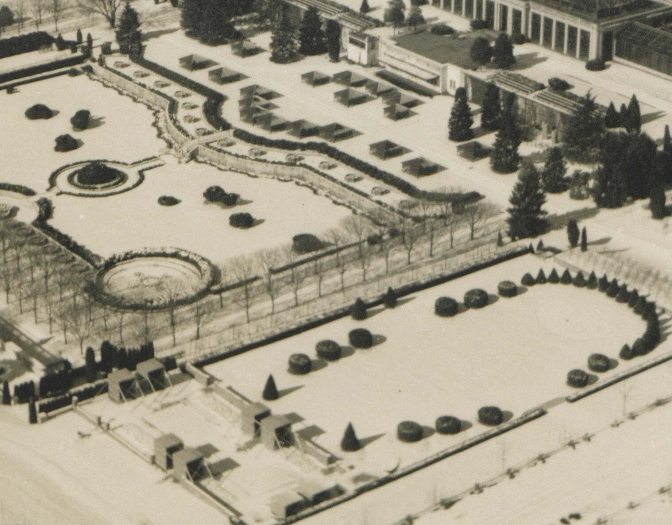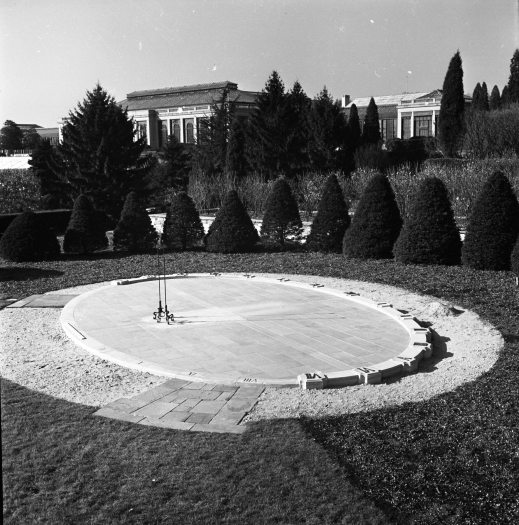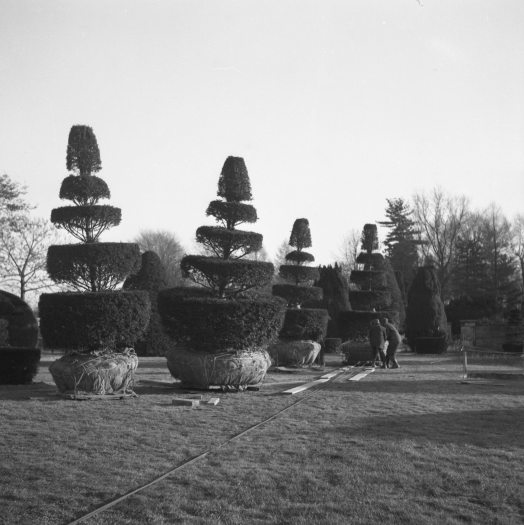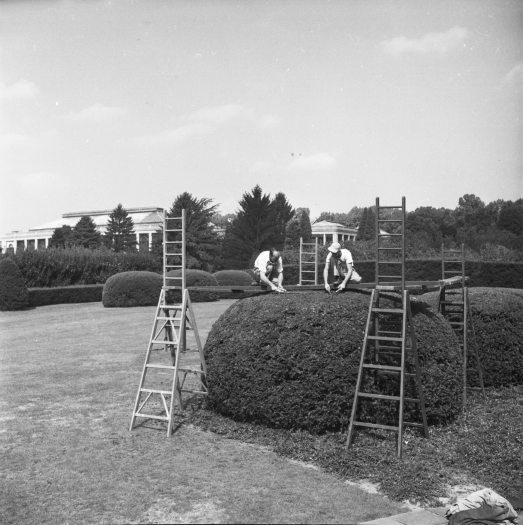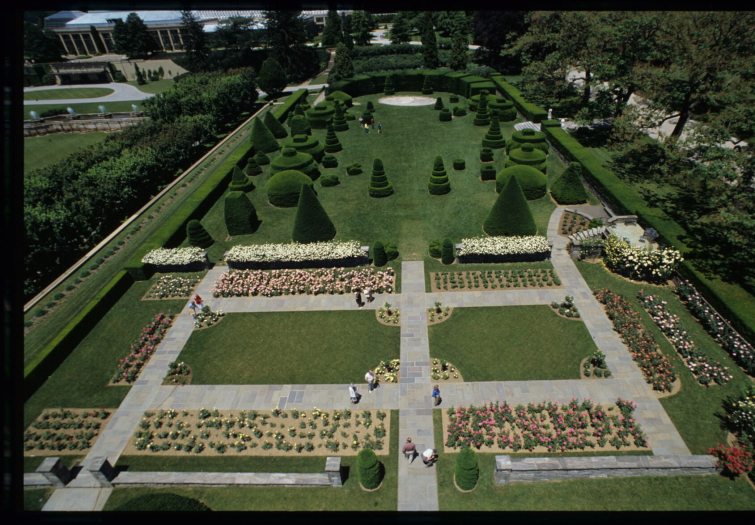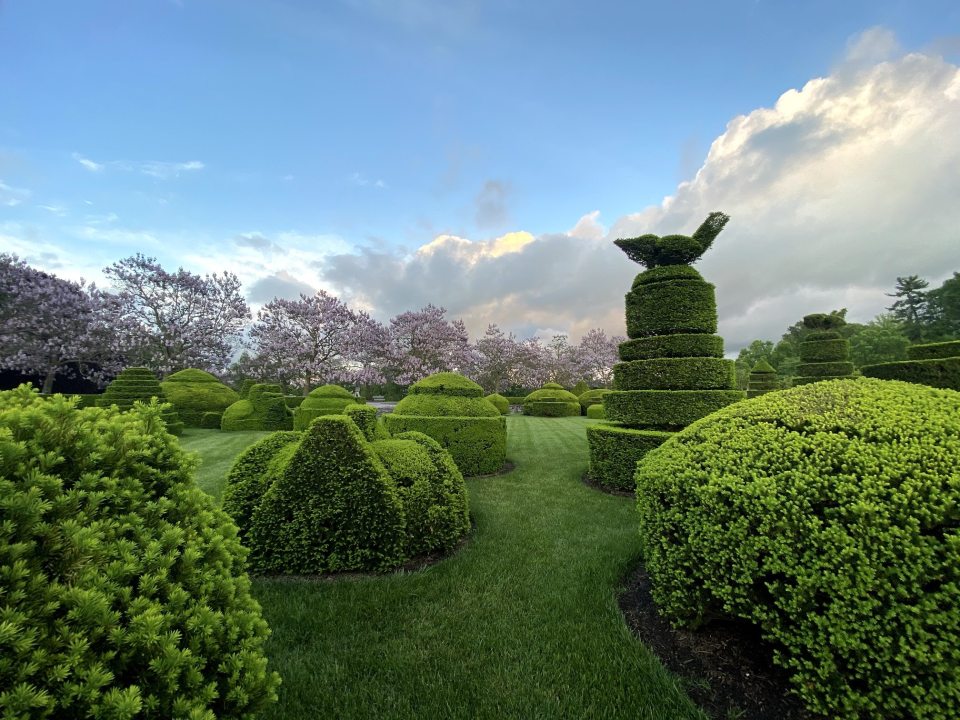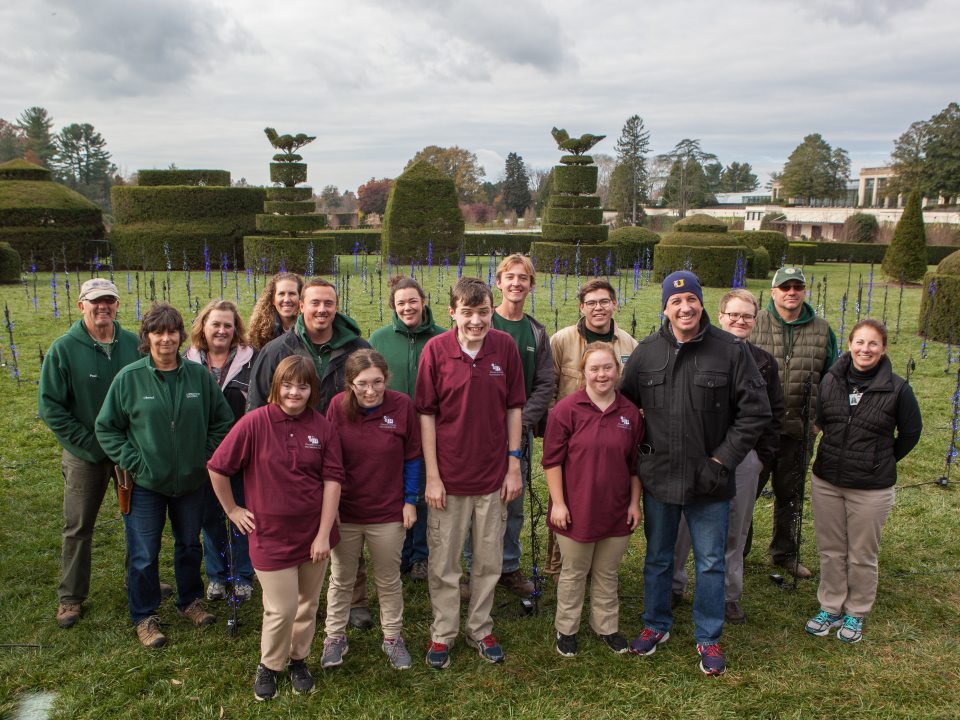From playful bunnies to fanciful spirals, you’ll find more than 35 specimens of meticulously maintained, highly cultivated yews in our Topiary Garden. Fancy a game of hide-and-seek? Children (and the young at heart) are often seen darting from behind the shapely, statuesque forms. Whether you’re here to play or here to marvel, a stroll amongst these impressive living sculptures is sure to leave a lasting impression.
About This Garden
Regardless of how you felt about high school geometry, no one can deny the arresting effects of this garden's mathematical precision. Over the years, the garden's shrubs have been groomed into pyramids, screws, a chair and table, a rabbit, and cubes, among other shapes. The rounded mounds, when topped with fresh snow, resemble colossal cupcakes; in the spring, an allée of paulownia trees planted in 1937 provides a pastel backdrop of softness to angular silhouettes. On hot days, guests can be found in the shade of a tiered, conical spire, upon which an alert bird lingers. Come fall, the deep evergreen color of the yews provides an earthy, dramatic contrast to the blue sky and autumn hues of surrounding trees. Echoing the clipped trees of the Main Fountain Garden and the tidy circle of yews in the adjacent Rose Garden, this formal space connects the landscapes artfully, with an elegant spirit.

